Colombia, a country that has captured my heart and soul, has been a recurring character in the story of my life. My first encounter with this vibrant land was back in 2013, a solo journey through the bustling streets of Bogotá and the colourful alleys of Cartagena. The Colombia I met then was a different world, a place still finding its footing on the global stage. But even then, I felt a spark, a connection that would draw me back time and again.
My travels led me to Ecuador, but the allure of Colombia was never far from my mind. I found myself making frequent trips across the border, from Ipiales to Pasto, then to Tulcan, each visit revealing a new layer of this multifaceted nation. The world changed, and so did Colombia. When I returned in 2022, after the dust of the pandemic had settled, I discovered a country that had blossomed. The once-cautious vibe had been replaced by an open, welcoming energy. This time, I ventured deeper, exploring the lush landscapes of Santander, the vibrant culture of Antioquia, and the untamed beauty of Chocó.
But it was in Bucaramanga that I truly found my home. For 16 months, I lived and breathed the city, becoming a part of its rhythm. It was here that I discovered the true essence of Colombia, a country that is more than just a travel destination; it’s a place to live, to grow, and to connect. This is my story, a digital nomad’s guide to the Colombia I’ve come to know and love.
Contents
- 0.1 Why Colombia Works for Digital Nomads
- 0.2 Cost of Living & the Strata System
- 0.3 Safety in Colombia
- 0.4 Colombia at a Glance (Quick Facts Box)
- 0.5 Colombia’s Climate & Regions
- 0.6 Cultural Highlights
- 0.7 A Note on Getting Around: The Bogotá Airport Advantage
- 0.8 Where to Explore (Examples, Not Endorsements)
- 0.9 Practical Tips for Nomads
- 0.10 The Double-Edged Sword: Overtourism and Its Impact on Colombian Cities
- 0.11 Final Thoughts
- 1 Are You Planning Your Next Trip? Here’s What I Use
Why Colombia Works for Digital Nomads
Colombia has emerged as a haven for digital nomads, offering a unique blend of affordability, connectivity, and cultural immersion. The country’s diverse landscapes, from the bustling cities to the tranquil coastal towns, provide a variety of environments to suit every taste. The ease of settling in, with access to modern amenities and a welcoming local population, makes it an ideal destination for those seeking a new home away from home.
The cost of living in Colombia is significantly lower than in many North American and European countries, allowing digital nomads to enjoy a high quality of life without breaking the bank. A monthly budget of around USD 1,200 to USD 1,800 can comfortably cover expenses in major cities like Medellín. This affordability extends to housing, with modern apartments available for a fraction of the price you would pay in other popular nomad hubs.
Internet connectivity in Colombia has improved significantly in recent years, with reliable fibre optic internet available in most major cities. The median fixed internet download speed in Colombia was 162.59 Mbps at the beginning of 2025, a significant increase from the previous year. This makes it easy for digital nomads to stay connected and work efficiently.
The Colombian government has also made it easier for digital nomads to live and work in the country with the introduction of a digital nomad visa. This visa allows remote workers to stay in the country for up to two years and has one of the lowest income requirements in South America. The application process is straightforward and can be completed online.
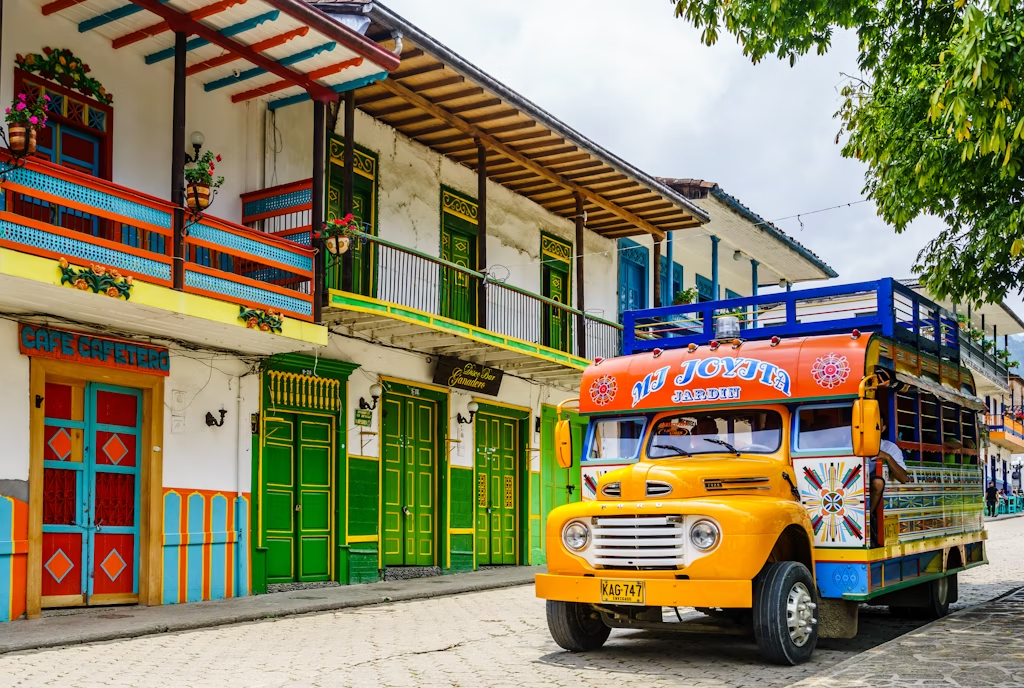
Cost of Living & the Strata System
One of the most unique aspects of life in Colombia is the “estrato” or strata system, a socioeconomic classification system that divides residential properties into six categories. This system, which is unique to Colombia, was created in the 1980s to ensure that everyone has access to basic public services. The strata system is based on the physical characteristics of a home and its surroundings, not on the income of its residents.
The strata system plays a significant role in determining the cost of living in Colombia. Residents in higher strata (5 and 6) pay more for public utilities, such as electricity, water, and gas, to subsidise the costs for those in lower strata (1, 2, and 3). This means that your utility bills can vary significantly depending on where you live. For example, in a lower stratum, you might pay around 100,000 to 150,000 Colombian pesos for utilities, while in a higher stratum, the cost could be as high as 300,000 to 350,000 pesos.
The strata system also affects rent prices. In lower strata (1-3), you can find apartments for as little as 700,000 to 1.5 million pesos per month. In higher strata (4-6), rent can range from 3 to 5 million pesos or more. The influx of tourists and digital nomads has also pushed up prices in some areas, leading to a displacement effect where locals are priced out of their own neighbourhoods. This is an important factor to consider when choosing a place to live, as it can have a significant impact on the local community.
Safety in Colombia
While Colombia has made great strides in improving safety and security, it’s important to be aware of the risks and take precautions. Like any country, there are areas that are best avoided, and it’s always a good idea to do your research before you go. The Canadian government advises exercising a high degree of caution in Colombia due to high levels of crime.
Petty crime, such as pickpocketing and bag snatching, is common in major cities like Bogotá, Medellín, and Cartagena. It’s important to be aware of your surroundings and take steps to protect your belongings. Avoid carrying large amounts of cash or wearing expensive jewellery, and be discreet with your electronic devices.
When it comes to transportation, it’s best to use reputable taxi services or ride-sharing apps like Uber. The metro system in Medellín is generally safe and efficient, but it’s always a good idea to be cautious, especially during off-peak hours. Walking tours are a great way to explore the city, but it’s best to go with a guide, especially until you feel comfortable on your own.
Nightlife in Colombia can be a lot of fun, but it’s important to be careful. Be wary of accepting drinks from strangers and never leave your drink unattended. It’s also a good idea to avoid walking alone at night, especially in unfamiliar areas.
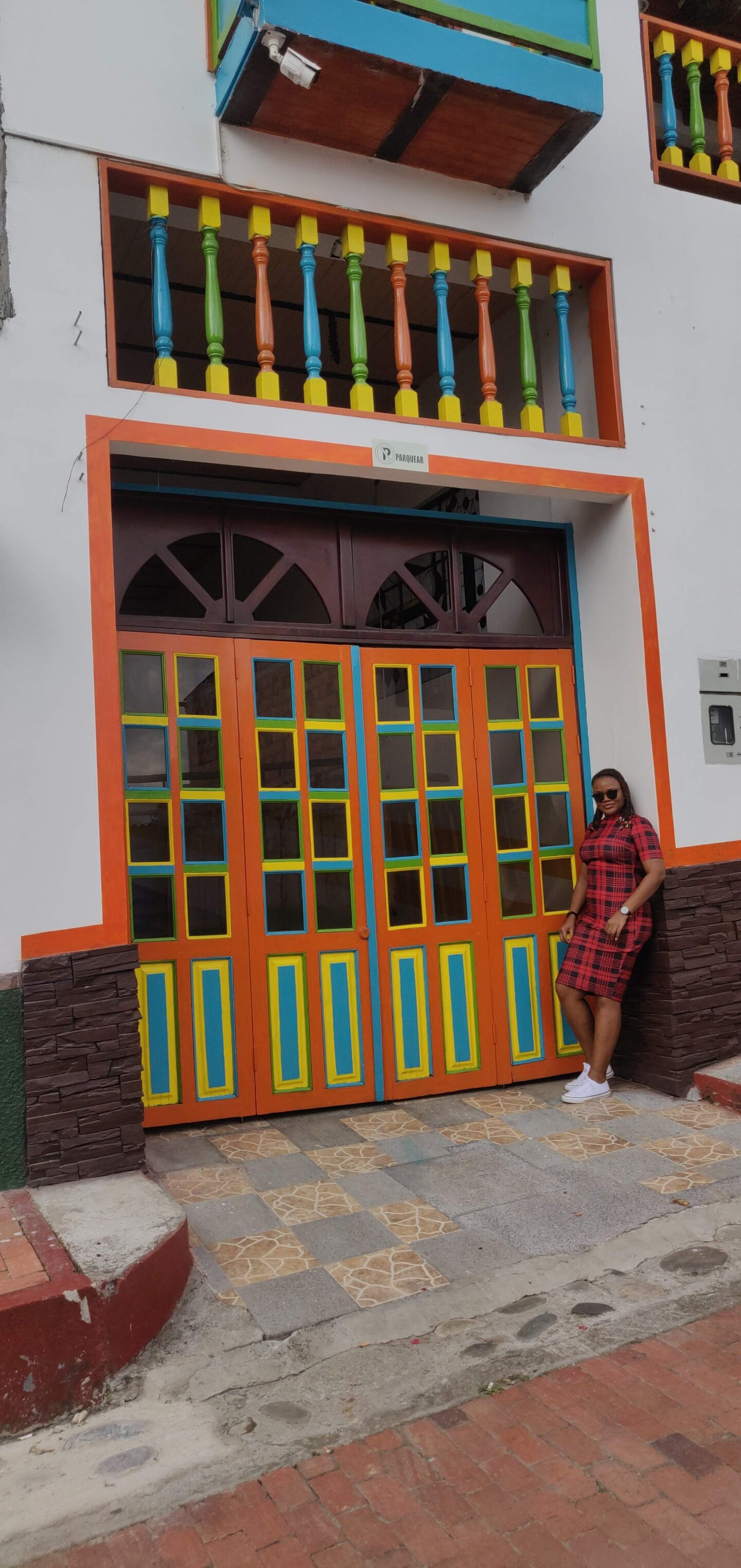
Colombia at a Glance (Quick Facts Box)
| Category | Information |
|---|---|
| Currency | Colombian Peso (COP) |
| Language | Spanish (regional accents vary) |
| Power Voltage | 110V AC, 60Hz, 2-prong plugs |
| Time Zone | Colombia Standard Time (COT) UTC -5 |
| Best Time to Visit | Dry seasons (Dec-Jan & Jul-Aug) |
| Digital Nomad Visa | Up to 2 years |
| Average Internet Speeds | 70–150 Mbps in cities |
| Popular Delivery Apps | Rappi, Domicilios, iFood |
| Banking Tips | ATM access is easy, keep small bills for daily use |
Colombia’s Climate & Regions
Colombia’s diverse geography, which includes everything from snow-capped mountains to tropical rainforests, means that the climate can vary significantly from one region to another. The country’s location on the equator means that it doesn’t have traditional seasons, but rather dry and rainy seasons. The dry seasons, from December to January and July to August, are generally the best times to visit.
The country can be divided into several distinct climate regions:
- Warm Climates: These regions, which include the Pacific and Caribbean coasts, have temperatures above 24°C. They are perfect for beach lovers and those who enjoy water sports.
- Temperate Climates: In these regions, which include cities like Medellín and Cali, temperatures range from 17°C to 24°C. This “eternal spring” climate is ideal for those who prefer milder weather.
- Cold Climates: These regions, which include Bogotá, have temperatures between 12°C and 17°C. Be sure to pack a jacket if you’re visiting this part of the country.
- Moorlands: In the moorlands, temperatures range from 6°C to 12°C. This is a great place for hiking and enjoying the natural beauty of the country.
- Glacier Regions: Here, temperatures are below 6°C. These regions are perfect for trekking and adventure sports.
- Tropical Rainforests: These hot and humid regions, such as the Amazon, have temperatures above 27°C. They are home to an incredible diversity of flora and fauna.
- Tropical Climate of the Steppe: These regions, such as La Guajira, are characterised by high temperatures, scarce rainfall, and sparse vegetation.
Cultural Highlights
Colombia’s culture is as diverse as its landscape, with a rich blend of Spanish, indigenous, and African influences. This cultural melting pot is reflected in the country’s music, food, art, and festivals.
Music: Music is the lifeblood of Colombia, and you’ll hear it everywhere you go. From the infectious rhythms of salsa and cumbia to the soulful melodies of vallenato and the modern beats of reggaeton, there’s a genre to suit every taste. Each region has its own unique musical style, reflecting the local culture and traditions.
Food & Drinks: Colombian cuisine is a delicious fusion of flavours and ingredients. Some of the must-try dishes include bandeja paisa, a hearty platter of rice, beans, meat, and plantains; arepas, a type of corn cake that can be filled with a variety of ingredients; and empanadas, savoury pastries filled with meat or vegetables. For a sweet treat, try obleas, thin wafers filled with arequipe (a type of caramel), or arroz con leche, a creamy rice pudding. And don’t forget to wash it all down with a refreshing glass of lulo juice or a cup of world-renowned Colombian coffee.
Traditions & Festivals: Colombians love to celebrate, and there are festivals and carnivals throughout the year. Some of the most famous include the Barranquilla Carnival, a four-day extravaganza of music, dance, and parades; the Flower Festival in Medellín, a celebration of the region’s rich floral heritage; and Semana Santa (Holy Week), a week of religious processions and ceremonies.
Arts: Colombia has a rich artistic tradition, from the pre-Columbian goldwork of the Gold Museum to the contemporary sculptures of Fernando Botero. The country is also home to a vibrant street art scene, with colourful murals and graffiti adorning the walls of many cities.
A Note on Getting Around: The Bogotá Airport Advantage
For any digital nomad or traveller planning to explore the vast and varied landscapes of Colombia, Bogotá’s El Dorado International Airport (BOG) is a strategic and invaluable asset. Its ideal geographical position in the center of the country makes it a perfect hub for domestic travel. From Bogotá, you can find direct and frequent flights to nearly every major city and region, from the Caribbean coast to the Amazon rainforest, often at very competitive prices. This exceptional connectivity makes it incredibly convenient to base yourself for wider exploration, allowing you to experience the full diversity of Colombia with ease.
Where to Explore (Examples, Not Endorsements)
Colombia offers a wide range of destinations to explore, from bustling cities to charming colonial towns and breathtaking natural landscapes. Here are a few examples of places you might want to visit, but remember to do your own research and choose a location that’s right for you.
- Cities: Bogotá, Medellín, Cali, Bucaramanga, Cartagena
- Smaller towns/pueblos: Pitalito, Jardín, Salento, Santa Elena, Barichara
- Coastal regions: Santa Marta, San Andrés, La Guajira
- Mountain escapes: Coffee Zone, Tatacoa Desert, Sierra Nevada
Disclaimer: While Colombia has become much safer in recent years, it’s still important to be aware of your surroundings and take precautions. Some areas of the country are still affected by conflict and instability, so it’s essential to research your destination thoroughly before you go.
Practical Tips for Nomads
- Learn Spanish: While you can get by with English in some tourist areas, learning Spanish will greatly enhance your experience and allow you to connect with the local culture on a deeper level.
- Choose your neighbourhood carefully: When choosing a place to live, consider factors such as safety, cost of living, and proximity to amenities.
- Get a local SIM card: A local SIM card will give you access to affordable mobile data and make it easier to stay connected.
- Get travel insurance: Travel insurance is essential for any trip, but it’s especially important if you’re planning to be away for an extended period.
- Stay healthy: Be sure to get any necessary vaccinations before you go and take precautions to avoid foodborne illnesses. It’s also a good idea to drink bottled water, especially in rural areas.
- Consider volunteering: Volunteering is a great way to give back to the local community and make a positive impact during your stay.
The Double-Edged Sword: Overtourism and Its Impact on Colombian Cities
While the growing interest in Colombia is a testament to its beauty and charm, it’s crucial to look beyond the glossy surface and understand the complex, often detrimental, effects of overtourism on the very soul of the nation. This isn’t just an observation from a distance; it’s a perspective shaped by countless conversations with the people who form the backbone of daily life here—the taxi drivers navigating the bustling streets, the staff maintaining the lobbies of apartment buildings, and the cleaners who share their unfiltered truths. Their stories paint a consistent picture of a country grappling with the consequences of its own popularity, especially in hotspots like Medellín and Cali.
One of the most immediate and painful impacts is the displacement of local communities. The influx of foreigners, able to pay significantly higher prices for accommodation, has created a housing crisis. In Medellín, for example, neighbourhoods once home to generations of Colombian families in estrato cuatro and cinco are now seeing rent prices skyrocket. It’s not uncommon for rents in these desirable areas to reach anywhere from 3 to 5 million Colombian pesos, a figure far beyond the means of most locals. In stark contrast, rents in estrato 1 to 3 areas typically range from 700,000 to 1.5 million pesos. This economic pressure forces local citizens, who are the heart of these communities, to move, effectively being displaced by a transient population. The sad irony is that many of the gleaming new Airbnb buildings that cater to tourists are owned by foreign investors, meaning the profits are not even reinvested into the local economy they are helping to transform.
Check out my Medellín Travel Guide to learn how to extend your tourist visa or apply for the new digital nomad visa!
This surge in prices isn’t confined to housing. The cost of living in these concentrated tourist zones has escalated across the board. Malls, restaurants, and even grocery stores adjust their prices to match what tourists are willing to pay, making everyday life more expensive for the local population. This creates a ripple effect that touches every aspect of their lives.
Perhaps most poignantly, this phenomenon erodes the cultural fabric of these cities. Cultural activities that were once central to Colombian identity are becoming inaccessible to the very people they belong to. A powerful example is the Feria de las Flores (Festival of the Flowers) in Medellín. What was once a deeply cherished, free, and public celebration of paisa culture has been partially privatised. Now, exclusive access and prime viewing areas are sold at exorbitant prices, effectively turning a community tradition into a ticketed event for foreigners. Locals who once participated freely now find themselves on the outside, looking in, as their own culture becomes a commodity they can no longer afford.
Furthermore, a darker side of tourism has emerged, driven by a distorted and damaging perception of Colombia. Many foreigners, particularly in areas like El Poblado in Medellín, are not here to appreciate the rich culture, the warmth of the people, or the stunning landscapes. They come seeking a caricature of Colombia, a place they’ve been misled to believe is a haven for drugs and prostitution. The area is saturated with bars and clubs, where it can be difficult to distinguish between a local resident and a sex worker. I’ve heard too many tragic stories from locals about foreigners who, after getting drunk, have been drugged, robbed, or lured away by someone they thought was a potential partner, only to be extorted or have their belongings stolen. The situation is so severe that Airbnb’s in the Antioquia region now require guests to sign contracts explicitly stating that any involvement with parties or prostitution—especially involving minors—will result in immediate eviction and a call to the police.
This is not the real Colombia. The true value of being here lies in genuine human connection. I can personally attest that in every place I have lived in this country, I have found the most incredibly supportive people. My neighbours have become my friends, inviting me to dinners and making me feel like part of their community. This is the experience that awaits those who are willing to look for it.
It’s a call for a more conscious and responsible way of travelling. To truly experience Colombia, you must venture beyond the tourist traps. Support local businesses, hire local guides, and make an effort to understand the impact of your presence. A visit that benefits not only you but also the local communities will be infinitely more rewarding than one spent in a bubble of manufactured experiences.
Final Thoughts
Colombia is a country of contrasts, a land of breathtaking beauty and complex realities. It’s a place that will challenge you, inspire you, and ultimately, change you. My journey as a digital nomad in Colombia has been one of growth and discovery, and I encourage you to approach your own adventure with an open mind and a responsible spirit.
Remember that Colombia is more than just an Instagram backdrop. It’s a country with a rich history, a vibrant culture, and warm, welcoming people. Take the time to get to know the real Colombia, to explore beyond the tourist traps, and to give back to the communities that have welcomed you with open arms.
If you’re ready to embark on your own Colombian adventure, I’m here to help. Work with me to plan your trip, and be sure to download my free Nomad Journal to document your journey.
Are You Planning Your Next Trip? Here’s What I Use
These are the tools I rely on to make every trip smoother, safer, and more meaningful. If you use the links below, I may earn a small commission at no extra cost to you. Thank you for supporting this blog and my journey as a full-time traveller 💜
1. Learn the Local Language
I use Babbel to practice Spanish, French, and Portuguese while travelling. The app makes it so easy to learn useful phrases on the go.
2. Travel Insurance is a Must
I never leave home without SafetyWing — they’re affordable and ideal for frequent travellers or digital nomads.
3. Book Your Tours & Experiences
For unique local tours and must-see experiences, I use:
→ Viator
→ Get Your Guide
4. Always Stay Connected
No matter where I go, Keepgo helps me stay connected with international data SIMs and eSIMs that actually work. A lifesaver when Wi-Fi fails!
5. Organize Your Itinerary
I use Tripsy to plan and store my itineraries, documents, and bookings in one clean app. It’s perfect for keeping track of everything in one place.
Until next time, travel softly,
Destiny

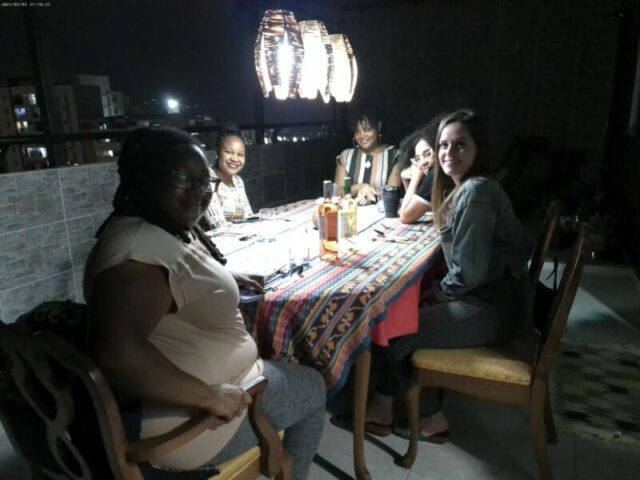
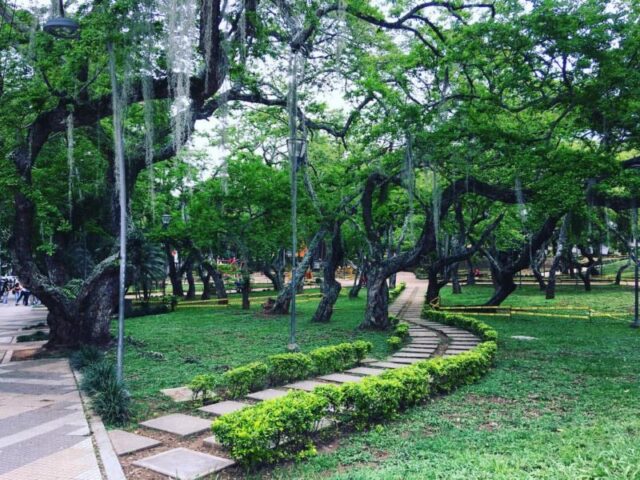
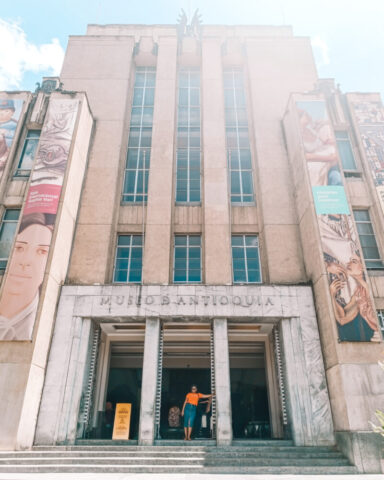

I absolutely love this so much detail. I’m planning to visit Colombia I’ll come back to this gir sure.
Author
I’m glad you like it and you’ll love Colombia
This is amazing writing and I love the details. How’d you become a nonad
Author
Thanks Kate. So I’ve been working online since 2017 in 2019 I started traveling, slowly. I fell in love decided to do it full time